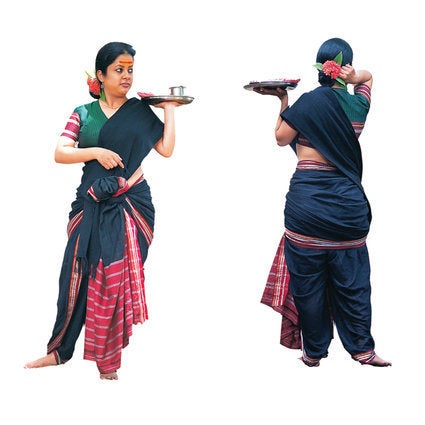
At the Kashi Vishwanath temple in Prime Minister Narendra Modi's constituency in Varanasi, guards are armed with saris. Yes, that's right. Any woman visiting the temple, "improperly attired" in calf-length pants or sleeveless tops, needs to cover up, and the temple administration is ready with saris on standby.
Last year, a priest was arrested for misbehaving with women devotees. Now it's the priests who have decided to censure women devotees in deference to the "Indian culture".
"Temple priests had been complaining about foreign women turning up in shorts, calf-length pants and sleeveless tops," P N Dwivedi, the assistant chief executive officer of the temple, told HuffPost India.
"It looks awkward if they come in shorts, while Indians are dresses in traditional clothes."
So, this means that the next time a woman visits the Kashi Vishwanath temple in shorts or a dress, she will have to drape a sari around herself before she enters the sanctum sanctorum of the temple. These saris will be readily available at two "check points" ahead of the temple's entry — at a police outpost outside the temple, and then again at the temple counter inside.
The temple authorities have so far provided 25 saris at the two entry points. Female police personnel have been deployed at these entry points to help such pilgrims in tying a sari. The temple has also opened changing rooms where these women constables will help the foreign visitors wear these saris.
"Many donate saris during pujas. We have enough of them. We have kept them at the police check-posts and counters on the temple premises," Dwivedi said.
However, if a foreign visitor comes wearing a pair of jeans or salwar-kameez, she wouldn't need to change: "We have no problem with those who cover their legs and arms," Dwivedi said.
Essentially, if you have a shawl or blanket, you can use those too, as long as you don't expose arms or legs.
So, while women 'covering up' is a projection of Indian culture, men can still come in shorts or whatever they like, at least for now. Dwivedi said they are planning a set of rules for men too, and may soon ask them to wear dhotis before they enter.
The dress code has reportedly been imposed following the demands of the domestic pilgrims, particularly those hailing from South India, who were making objections to the “revealing” dresses of foreign nationals.
"The idea is to make foreigners understand Indian culture and Vedic tradition. They can go home and talk about India's traditions this way," he said.
We are not sure if the foreigners visiting the temple will talk about India's traditions, but if not anything else, they will surely go back learning how to drape a sari and tie a dhoti.



Contact HuffPost India
Also see on HuffPost:
